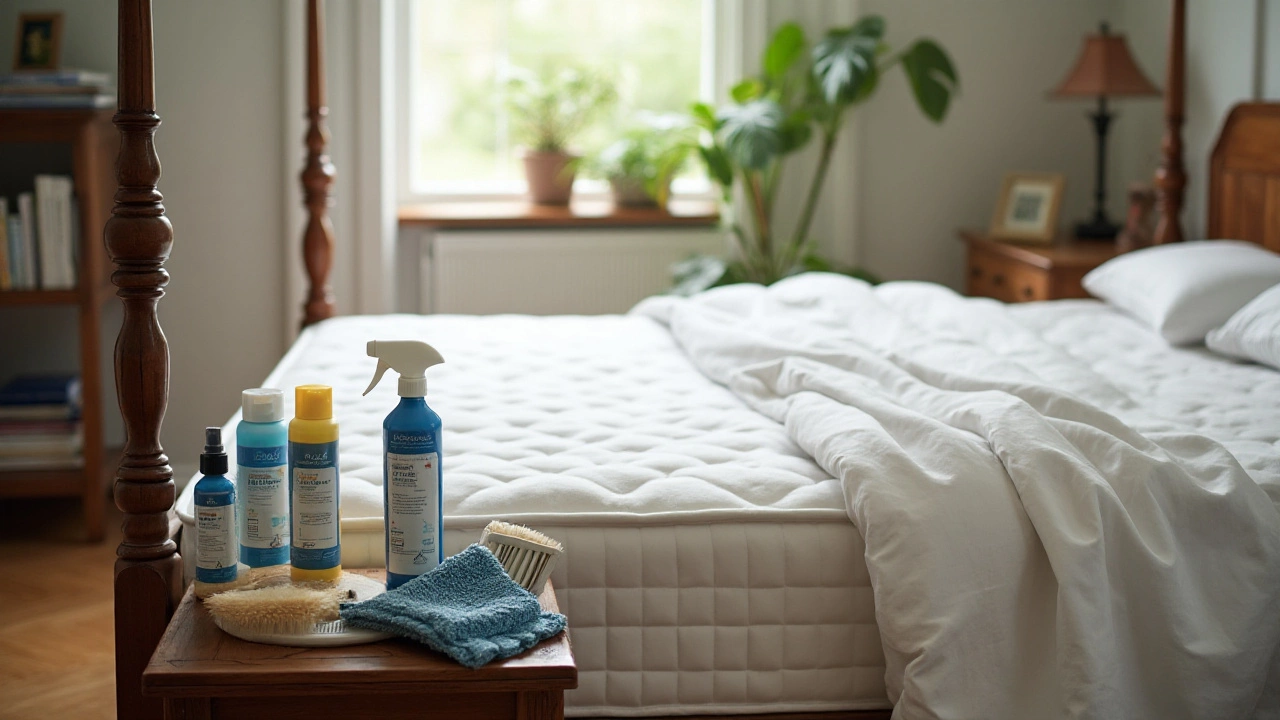Whitening Mattress: Easy DIY Methods for a Fresh Bed
Ever wake up and notice yellow spots or a musty smell on your mattress? It’s not just unsightly – it can affect how well you sleep. The good news is you don’t need a pricey service to bring your bed back to a clean, white look. With a few household items and a bit of time, you can whiten and freshen your mattress yourself.
Why Mattress Whitening Matters
A bright mattress does more than look nice. It reduces allergens, stops odor buildup, and helps you feel comfortable every night. Over time, sweat, dead skin, and spills create dark patches that attract dust mites. Removing those stains also stops them from spreading to your sheets and pillows.
Step‑by‑Step DIY Whitening Guide
1. Gather simple supplies. You’ll need baking soda, white vinegar, a spray bottle, a clean cloth, a soft brush, and a vacuum with an upholstery attachment. All of these are cheap and already in most kitchens.
2. Strip the bed. Take off sheets, pillowcases, and any mattress protectors. Wash them according to the labels. A clean surface lets you see the stains clearly.
3. Vacuum the mattress. Use the upholstery tool to pull out dust, hair, and loose debris. Go slowly and cover the whole surface, including the sides.
4. Spot‑treat stubborn stains. Mix one part white vinegar with two parts water in a spray bottle. Lightly mist the stained area – don’t soak it. Let it sit for five minutes, then blot with a clean cloth. The mild acidity lifts sweat stains without damaging the fabric.
5. Apply a baking soda scrub. Sprinkle a generous layer of baking soda over the entire mattress. For extra whitening power, add a few drops of essential oil (optional) for a fresh scent. Let the soda sit for at least four hours, or overnight if you can. It absorbs moisture, neutralizes odors, and gently lifts yellowing.
6. Vacuum again. After the waiting period, thoroughly vacuum the baking soda off. The mattress should feel drier and look lighter.
7. Air out the mattress. If weather allows, place the mattress near an open window for a few hours. Fresh air helps remove any remaining vinegar smell and speeds up drying.
8. Protect the whitened surface. Once the mattress is completely dry, add a washable mattress protector. This barrier keeps future spills from reaching the fabric and makes regular cleaning easier.
These steps work on most common mattress types – foam, spring, and hybrid. If your mattress has a removable cover, you can wash it separately for an even brighter result.
Need a faster option? Mix one cup of hydrogen peroxide with two cups of water and lightly spray the surface before the baking soda step. The peroxide adds a gentle bleaching effect, but be careful not to over‑saturate.
Remember to repeat the whitening routine every few months, especially if you notice new stains or odors. Regular care keeps the mattress from turning dark again and extends its lifespan.
So next time you see a yellow patch, don’t panic. With baking soda, vinegar, and a little patience, you can bring your mattress back to a clean, white look that feels as fresh as new.

Revitalize Your Mattress: A Guide to Restoring Whiteness
Restoring your mattress to its original whiteness can seem like a daunting task, but with the right techniques and a little elbow grease, it's definitely achievable. This article offers step-by-step instructions to identify types of stains, natural and chemical cleaning solutions, and preventative tips to maintain a pristine mattress. Get ready to uncover the secrets to a brighter, fresher place to rest. These practical and easy-to-follow methods will leave your mattress looking almost new.
Read More